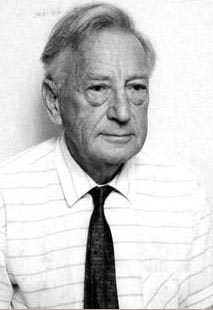Hans A. Buchdahl
Hans A. Buchdahl

Hans A Buchdahl was born in Mainz, Germany. He studied at the Royal College of Science London, later absorbed into Imperial College, completing a bachelor of science and receiving the Associate of the Royal College of Science from Imperial College
When World War II began, Buchdahl was one of 2,500 German, Austrian, and Italian nationals transported to Australia on the infamous ship Dunera. Buchdahl’s talents were noticed by members of a government optical munitions panel. In 1941, he was released under a guarantor and transferred to the University of Tasmania to assist with optical munitions work. He was awarded the DSc by the Universities of Tasmania (1949) and London (1956).
Buchdahl remained at the University of Tasmania for 20 years, rising from senior lecturer to reader. In 1962, he was named Professor of Theoretical Physics, Faculty of Science at the new School of General Studies of the Australian National University (ANU). He retired in 1984, remaining at the University as an emeritus professor, University Fellow, and later Visiting Fellow.
Buchdahl was the author of five books and 160 published research papers. He was elected a Fellow of the Australian Academy of Science in 1968. His other awards and honors included the Thomas Rankin Lyle Medal (1972); the Walter Burfitt Medal from the Royal Society of New South Wales (1980); the C.E.K. Mees Medal (1993); and the A.E. Conrady Award of the International Society for Optical Engineering (1997). He was a Nuffield Foundation Dominion Fellow (1951); a member of the Institute for Advanced Study at Princeton University (1959–60); Professor of Optics, University of Rochester (1967–68), and an overseas fellow of Churchill College, Cambridge, UK (1979). OSA elected him as a Fellow in 1974.
Hans Adolf Buchdahl died on 7 January 2010, please see Optica's memorial entry.
Document Created: 26 July 2023
Last Updated: 14 November 2024
